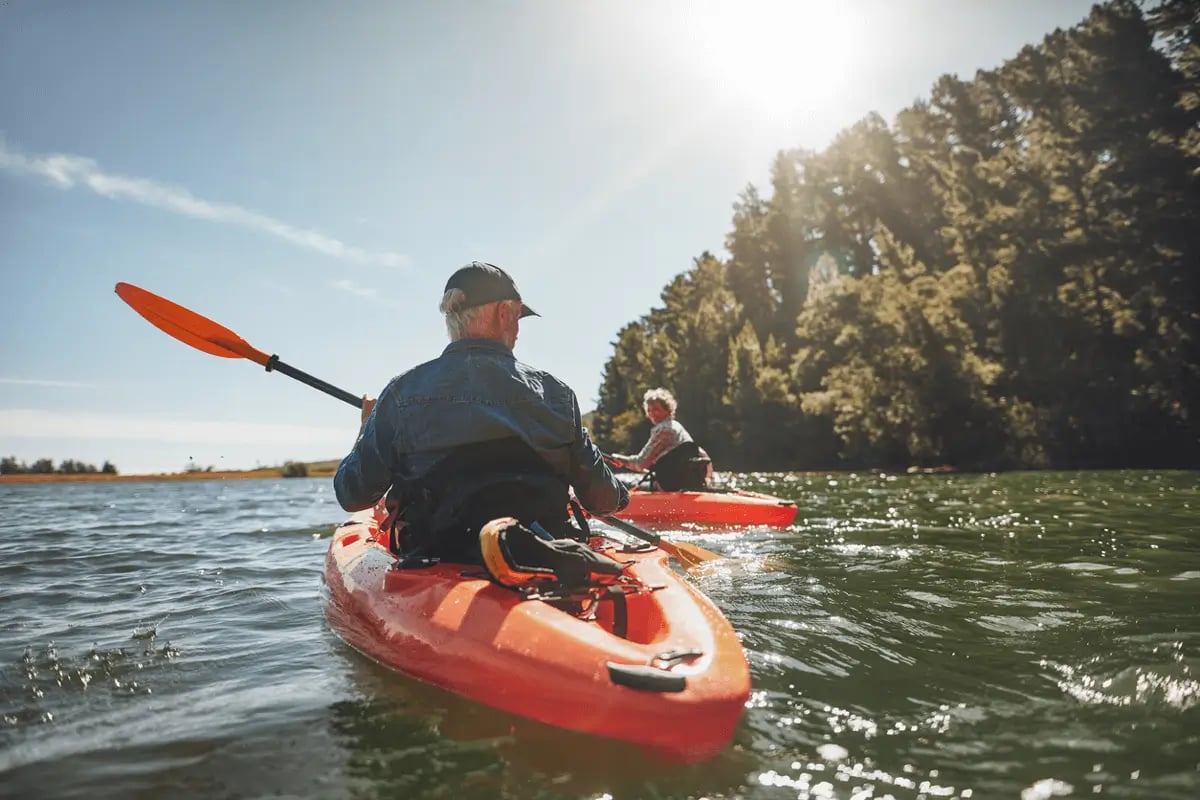For many of us, KiwiSaver will provide a significant portion of our retirement income. But it's only one part of the equation.
On this page we look at the role KiwiSaver plays in an overall investment strategy, what other assets you should factor into your retirement savings calculations, and how to optimise your KiwiSaver now, so you can retire with more.

What’s great about KiwiSaver is that it's automatic, you don’t even notice you are investing, and your employer and the government also contribute.
KiwiSaver is a solid foundation for retirement savings. What many people don’t realise is that most KiwiSaver investments are managed funds. KiwiSaver scheme providers invest in their funds on your behalf, and, as with any other form of managed fund, there are many options to choose from.
Your KiwiSaver investment should be an important consideration in your overall investment strategy. Focusing on how your KiwiSaver is invested is not only important for maximising your potential income at retirement, it’s also a great way to learn about the world of managed funds.
And as KiwiSaver providers are obliged to set reasonable fees, KiwiSaver is a cost-effective way to continue with your retirement investment long after the ‘golden age’ of 65. With the right structure of funds within your KiwiSaver investment, you have the flexibility to draw down your money, as and when you need it, so you can keep your investments working.
Unlock your KiwiSaver potential with the right combination for you on using our GoalsGetter online investment platform.

Today we are living longer, healthier and more active retirements than our parents and grandparents did. So will your KiwiSaver provide you enough income for the long run?
For many of us, the lifestyle we may wish to live in retirement is likely to require income from other sources, as well as KiwiSaver.
Take any online KiwiSaver retirement calculator test and you may find there’s quite a gap between what your KiwiSaver savings will provide in the way of weekly income, versus your desired income (and lifestyle), so it’s wise to consider KiwiSaver as one part of a retirement investment strategy that comprises a diversified portfolio of investments and income. This could include:If you’re lucky enough to have income, savings or a windfall that allows you to invest in financial markets, then investing in managed funds (over and above your KiwiSaver investment) is an approach to wealth building to be seriously considered.
By working with a fund manager who manages your investment portfolio, you’ll get the advantage of their experienced and ever-watchful eye on market movements, trends and companies to watch.

The great news is that KiwiSaver doesn’t suddenly come to an end at 65. As KiwiSaver providers are obliged to set ‘reasonable’ fees, KiwiSaver is a cost-effective way to continue with your retirement investment.
With KiwiSaver as part of a wider investment strategy, it’s still important to think about how you can maximise the returns you’re getting from your KiwiSaver investment today, in the lead up to, and during retirement. Here’s some considerations for today, tomorrow and when you retire in the future.
Most people are familiar with the broad fund categories available in most KiwiSaver Schemes - Conservative, Balanced and Growth - which target different levels of risk. However, what many people don’t understand is that you also have the opportunity (and ability) to manage your risk by carefully selecting the specific types of funds you invest in (note: you can choose your funds, but not the underlying assets the fund is invested in).
Another way to potentially manage your risk is through diversification of fund managers. The GoalsGetter KiwiSaver Scheme offers a selection of fund managers and funds which have all been carefully selected and vetted by independent investment experts. This enables you to build a diversified portfolio, tailored to meet your investment goals, using a combination of high quality funds across different fund managers.
A fund’s risk level is defined in the product disclosure statement (PDS) and is based on historic volatility. Volatility is about how much the value of the underlying assets move up and down over time. For example, equities typically move up and down by greater amounts than bonds and so would have a higher level of volatility and higher risk rating. Cash is typically more predictable in the short run and will only have small changes in value especially in periods when interest rates are very low. By choosing a combination of these assets the KiwiSaver providers are able to target different levels of risk for different funds.
How do you decide what funds are right for you? Consider:
As a general guide, the more time you have until you can access your KiwiSaver investment for retirement, the more risk you may be able to tolerate, as you have time to recover from potential losses.
If KiwiSaver is your entire retirement saving plan, you might want to make sure it's well diversified across different strategies. But if it is a small portion of your total retirement plan, you may look at shifting towards a more aggressive fund. Consider how to achieve diversity with a mix of assets as you grow your wealth.
Your level of comfort with risk is important, regardless of your timeframe and mix of investments. Are you comfortable with losses in the short-term to achieve higher returns in the long run or does the thought of any loss keep you up at night?
Do you want rules-based investment (passive) or would you prefer an experienced professional to be researching companies and markets and making calculated investment decisions?
An obvious option many people question is the value of increasing contributions to KiwiSaver compared to investing money elsewhere. As your investment is managed for you, under strict government regulations and with reasonable fees, you could consider increasing your contributions to beyond the minimum 3%. (Minimum contribution amounts are changing. Read more about these changes: https://www.goalsgetter.co.nz/info-centre/latest-kiwisaver-changes)
However, remember that your money is locked into KiwiSaver until the age of 65 – unless you’re planning to apply for a withdrawal for a first home or if your circumstances change. So before deciding to increase your contributions, do the maths to see if it suits your situation. You may want to consider an additional long term investment outside of KiwiSaver using managed funds.
You can still keep your KiwiSaver savings invested – but consider how and when you want to use your investment.
As you approach 65 and immediately after, you should continue to assess your objectives and comfort with risk, for many people this may change once you stop earning. If you intend to start using your KiwiSaver savings for income straight away you may choose a mix of lower-risk, income-focused funds. However if you don’t intend to use your KiwiSaver savings for another 5-10yrs , higher risk/return funds maybe more appropriate to help reach you retirement goals. Or you could be somewhere in the middle in which case a combination may be best.
With the right structure of funds within your KiwiSaver investment, after 65 you’ll have the flexibility to draw down your money, as and when you need it, but also keep your investments working.
We are fortunate in New Zealand to have a standardised retirement savings scheme in the form of KiwiSaver. But it’s wise to consider your KiwiSaver investment as only one part of your retirement income if you have dreams of retiring comfortably. In the meantime, there are ways to optimise your investment in KiwiSaver. Try our GoalsGetter online tool to see how your retirement target can grow with a different mix of investments.
Using GoalsGetter can help you to create a personalised KiwiSaver portfolio with a combination of high-quality handpicked funds from NZ's leading fund managers in our GoalsGetter KiwiSaver Scheme. Making smart KiwiSaver investment decisions has never been easier.